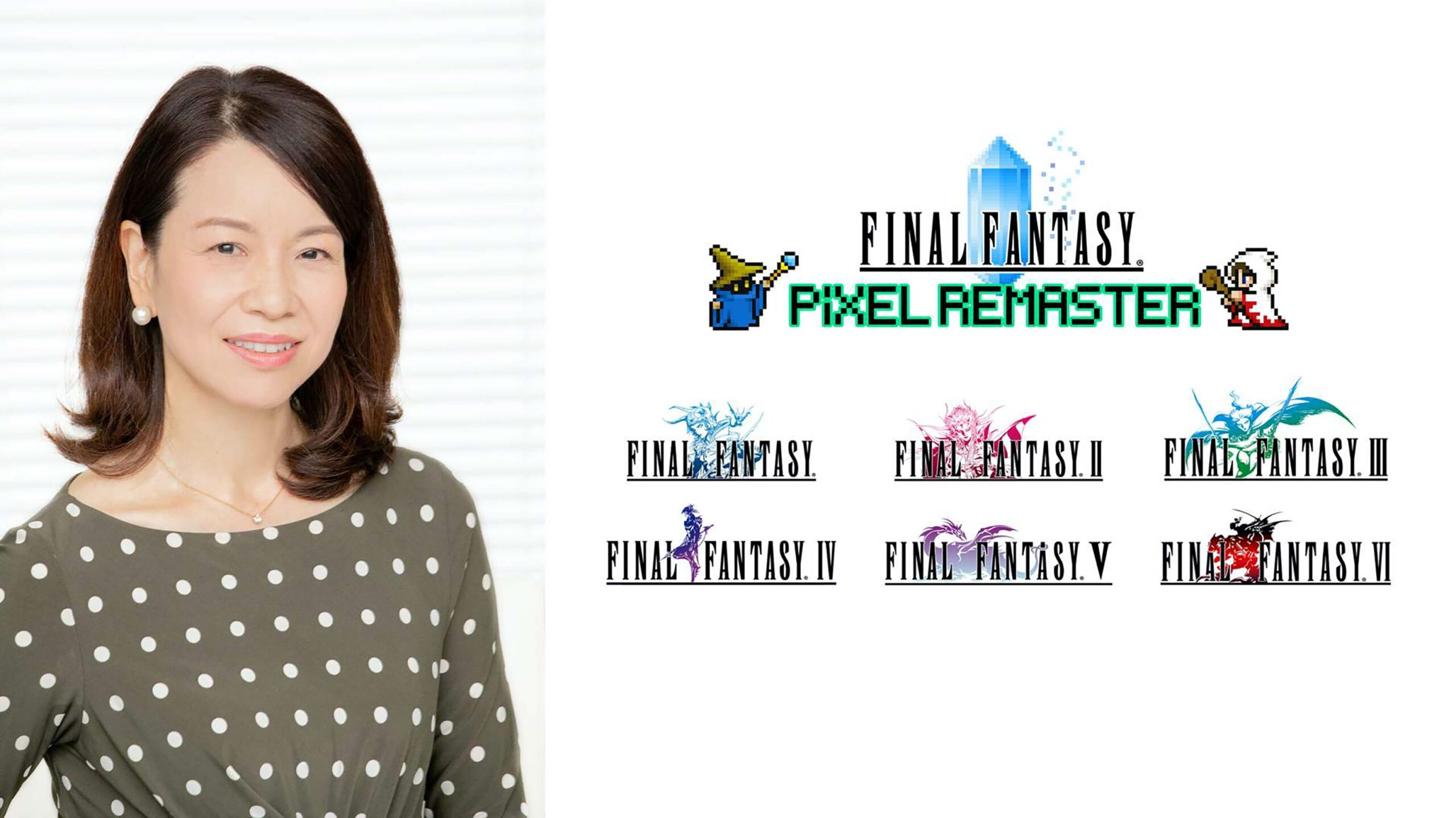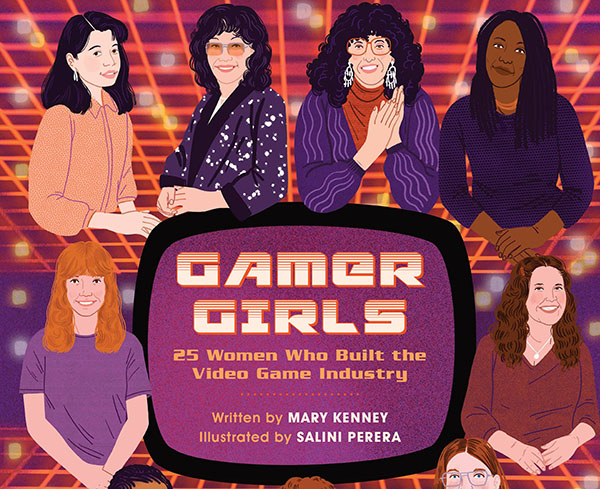
Last year, the Entertainment Software Association of Canada found that about 50 percent of the country’s gamers identify as female, but only 23 percent of video game developers are women. Of course, not everyone who plays games will want to become developers, but it’s still a grossly uneven split in the demographics of those who make them for a living.
As I’ve spoken to spoken several women in the industry, including those at Square Enix, Ubisoft, EA and Behaviour Interactive, a common thread that’s come up is visibility. In other words, why not help bring more women into gaming by letting them see and hear from those already in the industry? Being able to see women be successful in this space in spite of adversity — including, but not limited to, harassment — can make all the difference.

With that in mind, Insomniac Games senior writer Mary Kenney has penned a wonderful book called Gamer Girls: 25 Women Who Built the Video Game Industry. In it, Kenney looks across countries, decades, genres and job types to assemble an outstandingly varied list of both famous and lesser-known women in the industry to profile. I was already intrigued by the premise, and I only became more interested upon seeing Kenney’s name, given her work on great games like Marvel’s Spider-Man: Miles Morales (including writing for a barrier-breaking Deaf character), Ratchet & Clank: Rift Apart and Batman: The Enemy Within.
But the best part of Kenney’s Gamer Girls is that you don’t have to be a big gaming aficionado like me. Smartly, Kenney has written the book in a very engaging, easy-to-pick-up manner, making it approachable for anyone. There’s even a glossary that defines everything from “AAA games” and “bugs” to “mechanics” and “assets” if you need it. That said, Kenney’s writing is informative while keeping things simple and jargon-lite, which will no doubt be welcoming to more casual gamers.
“I approached writing this book with a simple goal in mind: to show girls that they can make video games,” writes Kenney in Gamer Girls‘ introduction of her target audience. “Young girls, teenage girls, middle-aged girls, cis girls, trans girls, Black girls, Asian girls, mixed-race girls, people who aren’t girls at all but are reading this book, girls who want to be bosses and girls who don’t, girls who love math and girls who love art. Any girl can be a game developer.”
It’s a powerful, meaningful message, and Kenney uses the many other talented women featured in her book to convey it. Did you know that Uncharted, the popular Naughty Dog action-adventure series that just got a Tom Holland-led live-action film, was created by former English literature and film student Amy Hennig? Speaking of adventure games, were you aware that the entire genre was co-created by Roberta Williams with 1980’s Mystery House, just one of her many groundbreaking and influential works? Would you believe that the first-ever game with Marvel’s iconic wallcrawler, Spider-Man for the Atari 2600, was created by engineering technology grad Laura Nikolich? Can you guess in which year the first female programmer, then-18-year-old Joyce Weisbecker, started out? (Answer: 1976 with TV Schoolhouse 1 for the RCA II!)
While I was familiar with some of the women in Gamer Girls, there were many, like Nikolich and Weisbecker, whom I discovered for the first time while reading. That’s the real brilliance of the book — everyone can learn something from reading it, regardless of their level of familiarity with the gaming industry.
It should be noted, however, that one of the women featured in Gamer Girls, Journey produced and Funomena founder Robin Hunicke, was accused by multiple developers earlier this year of creating an emotionally abusive workplace. Of course, Kenney would have been putting this book together well before this came to light, so it’s no fault of hers. On top of that, Hunicke’s chapter does still contain great insight into everyday sexism, as well as some potential ways to counter it. Nonetheless, it’s important to give context about the allegations made against her.
Those saddening circumstances aside, the two dozen other women featured in Gamer Girls are all fascinating and commendable in their own ways. On a personal level, I was happiest to see the inclusion of Yoko Shimomura, the beloved composer of Kingdom Hearts. I’ve written before about how much the Disney-Square Enix series means to me, in no small part due to Shimomura’s involvement in it, and so it warms my heart whenever more people may be introduced to her work through things like this book. (On that note, the excellent remake of the once Japan-only Live A Live — and her first Square game — also released this month, and her music for it is masterful.) And as a Canadian, it was especially nice to see a chapter on Montreal’s Jade Raymond, the co-creator of Assassin’s Creed and founder of Ubisoft Toronto and Quebec’s EA Motive and PlayStation-owned Haven.
Structurally, Gamer Girls is laid out in an appealing, digestible package. Each chapter is only a few pages long, offering a succinct but well-researched overview of each woman’s contributions to the industry. As a nice touch, Kenney has also included “Side Quests” — little blurbs about folks like BioWare Edmonton (Mass Effect) lead editor Karin Weekes or Media Molecule (LittleBigPlanet) studio director Siobhan Reddy to offer further insight into the work of women in gaming.
From passage to passage, you can feel Kenney’s infectious enthusiasm for the industry and her peers, making for quite a pleasant read. Accompanying all of this are lovely illustrations from Sri Lanka-born, Toronto-raised artist Salini Perera, which add even more colour and personality to Kenney’s words.

Jade Raymond (Image credit: Wikimedia Commons)
At the same time, Kenney crucially doesn’t shy away from some of the darker sides of the gaming industry, especially for women. In her intro, she mentions how a Q&A with a girl-centric game design boot camp raised questions about toxicity in gaming, especially from the perspective of the misogynistic online harassment campaign, GamerGate. After a few moments to think, she gave a nuanced response that acknowledges the unjust hate women get simply for being women while pointing out the joys of game development, like the passionate collaboration between coworkers and the satisfaction of players finally getting their hands on their work. Throughout the book, Kenney also outlines the struggles that each of the profiled women faced, like Raymond’s accomplishments being dismissed because of her looks or how artist Kazuko Shibuya, the woman behind some of the Final Fantasy series’ most iconic visuals, sadly went uncredited for decades.
It’s important that Kenney recognizes these hurdles, not only to be honest to aspiring game developers, but to show how these women were nonetheless able to overcome them. “The stories in this book are about passion, hope, resilience, optimism, and grit,” writes Kenney in her intro. After reading through these stories, I completely agree. There’s a lot to learn and be inspired about here, and I encourage anyone with even a passing interest in games and technology to check it out.
Gamer Girls: 25 Women Who Built the Video Game Industry is now available for $22.99 CAD from retailers like Indigo, Amazon and your local bookstore.
Image credit: Square Enix (Kazuko Shibuya)
MobileSyrup may earn a commission from purchases made via our links, which helps fund the journalism we provide free on our website. These links do not influence our editorial content. Support us here.


